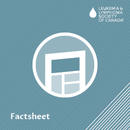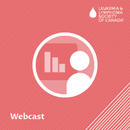Resource Library
Showing 141 to 150 of 333 results
B-PLL is a rare and often aggressive cancer. B-PLL often evolves from a more slow-growing B-cell cancer such as chronic lymphocytic leukemia (CLL). It’s a type of PLL with cells that are large; these cells are not normally found in the blood.
B-cell ALL is a sub-type of acute lymphoblastic leukemia (ALL). About 88% of children with ALL, and 75% of adults with ALL, have B-cell ALL. It is a fast-growing (aggressive) type of blood cancer.
SMZL is a rare, slow-growing (indolent) B-cell subtype of non-Hodgkin lymphoma. SMZL is one of three subtypes of marginal zone lymphoma, and it often involves the spleen, bone marrow, blood, and abdomen.
A mother talks about how her world turned upside down when her 7-year-old daughter was diagnosed with a blood cancer. Already juggling work and family, becoming a caregiver on top of it all felt overwhelming to her. This mom's self-care took a back seat as she focused her energy on the care of her sick child.
This video, told from the father's point of view, talks about the strains on himself, his wife, their child with cancer, and their other children.
He describes every hospital visit, every round of treatment as "a rollercoaster of hope and fear."
He describes every hospital visit, every round of treatment as "a rollercoaster of hope and fear."
Activity book for children and families facing a blood cancer diagnosis.
Receiving a blood cancer diagnosis can be challenging and overwhelming. Along with physical symptoms, individuals with a blood cancer diagnosis may experience serious mental health challenges such as depression, anxiety, or even post-traumatic stress disorder (PTSD).
You or your loved one has been diagnosed with a type of blood cancer. You will be making important decisions with your healthcare team.
Your patient has been diagnosed with a type of blood cancer. You will be supporting them and their family in making important decisions
If you are affected by a blood cancer, you want your voice to be heard and your health care needs to be met. Ryan Clarke, Senior Vice-President, Advocacy & PR at CRG-Eversana Canada Inc, speaks about the importance of self-advocacy and will share tips on how to be an effective advocate when working with your medical team.



